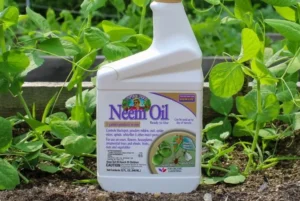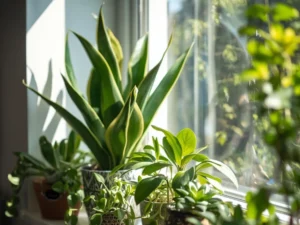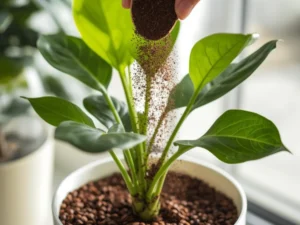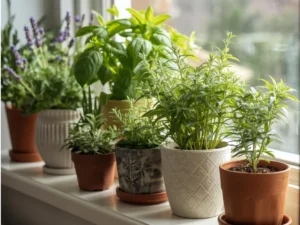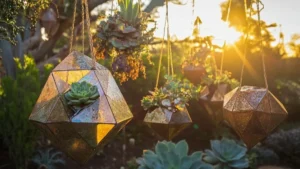Using coffee grounds indoor plants has become popular among gardeners, offering a sustainable way to reduce kitchen waste. They provide nitrogen, essential minerals, and organic matter that enrich soil. This improves soil structure, water retention, and aeration for healthier houseplants.
Using coffee grounds incorrectly can lead to soil compaction, mold, or root stress. Gardeners who apply them properly support healthier indoor plants. When used carefully, coffee grounds become a valuable, sustainable addition to plant nutrition.
Many houseplants benefit from soil amendments like coffee grounds, especially those that thrive in slightly acidic or nitrogen-rich environments. Beyond the nutritional advantages, incorporating coffee grounds also encourages environmentally friendly gardening practices, reducing the need for synthetic fertilizers.
Effects of Coffee Grounds on Indoor Plant Growth
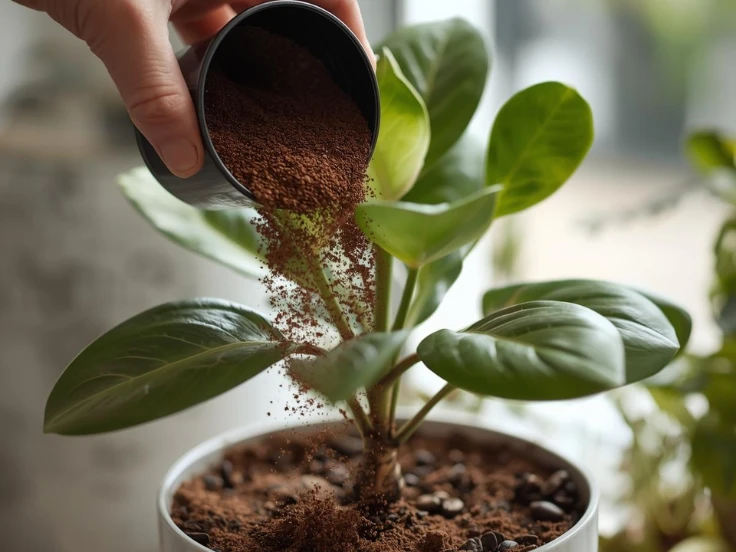
When applied correctly, coffee grounds can significantly improve indoor plant soil. The organic matter in coffee grounds indoor plants enhances soil texture, increasing water retention and aeration. Nitrogen content helps stimulate healthy foliage growth, supporting strong, vibrant leaves.
Over time, coffee grounds break down into humus-like material, enriching the soil and promoting microbial activity.However, it is important to use moderation. Excessive coffee grounds can compact soil, reduce oxygen availability to roots, and potentially cause mold or fungal growth.
The mild acidity of coffee grounds lessens after decomposition, but excess use can still affect soil pH. Some plants thrive on the added nitrogen, while others may struggle. Knowing which species benefit ensures coffee grounds enrich soil instead of stressing houseplants.
Indoor Plants That Benefit from Coffee Grounds
Certain indoor plants respond well to coffee grounds for houseplants, especially those that love acidity and nitrogen. Ferns, peace lilies, and African violets thrive with moderate use. These nutrients support greener foliage and stronger, healthier growth.
Examples include:
-
Ferns and African violets, which require nitrogen-rich soil for lush growth.
-
Peace lilies, which respond to nutrient boosts with improved foliage color and size.
-
Indoor azaleas and hydrangeas, which benefit from mild soil acidity.
-
Moisture-loving plants, where coffee grounds improve water retention and soil structure.
By using coffee grounds strategically, gardeners boost leaf growth, improve soil aeration, and promote sustainable indoor gardening. Repurposing grounds reduces kitchen waste while nurturing healthier plants. Always monitor each plant’s response and adjust use as needed.
When to Avoid Coffee Grounds for Indoor Plants
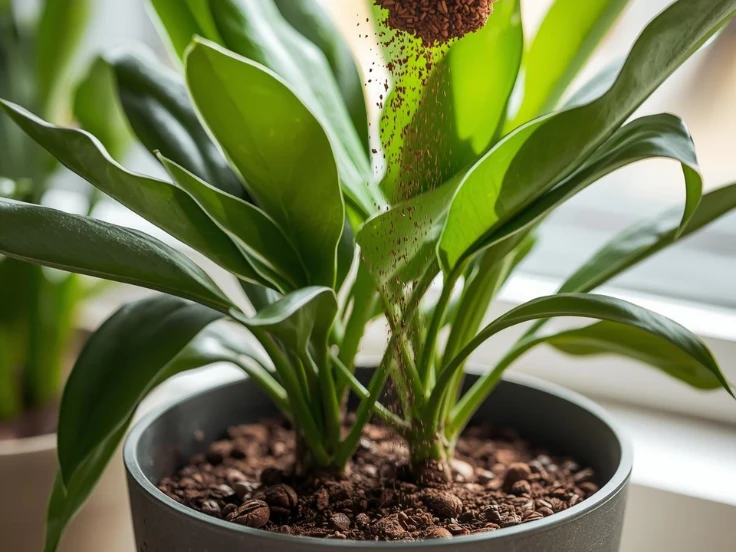
While coffee grounds offer many benefits, they are not suitable for all indoor plants. Plants that prefer alkaline soils, such as succulents or cacti, may suffer if exposed to coffee grounds. Seedlings and young plants are particularly sensitive, as excessive nitrogen can inhibit root development.
Additionally, layering thick amounts of coffee grounds on soil surfaces can trap moisture, create a crust, and encourage mold growth. Indoor soils lacking sufficient microbial activity may not decompose the grounds effectively, leading to fungus gnats or other pest problems.
To ensure safe use, incorporate coffee grounds into the soil rather than applying them directly to the surface. Apply sparingly and monitor your plants for any signs of stress, such as yellowing leaves, slow growth, or mold formation. Coffee grounds should complement, not replace, a balanced fertilization routine.
How to Use Coffee Grounds for Indoor Plants
Applying coffee grounds indoor plants correctly can maximize their benefits. One effective method is mixing dry, used coffee grounds into potting soil during repotting. Keep the proportion under 20% of the total soil volume to prevent compaction.
Another method involves making a coffee-ground tea: steep one cup of used coffee grounds in several liters of water overnight, strain the liquid, and use it as a diluted fertilizer for watering plants once a week.
Tips for safe application include:
-
Always use plain, brewed coffee grounds with no added sugar, milk, or flavorings.
-
Avoid layering thick amounts on the soil surface.
-
Apply occasionally, supplementing regular fertilization.
-
Observe plant growth and adjust use according to plant response.
These methods allow gardeners to safely incorporate coffee grounds into indoor plant care routines, enhancing soil nutrition and supporting sustainable gardening practices.
Coffee Grounds Indoor Plant Myths
Several myths exist regarding coffee grounds indoor plants, and understanding the truth is essential for effective care. Knowing what’s fact versus fiction helps gardeners use coffee grounds wisely, ensuring plants receive real benefits without unintended harm.
-
Myth: Coffee grounds drastically acidify soil. In reality, used coffee grounds have a mild acidity that diminishes after decomposition. They rarely affect soil pH significantly for most houseplants.
-
Myth: Coffee grounds are a complete fertilizer. While rich in nitrogen, coffee grounds lack phosphorus and potassium, which are essential for flowering and overall plant health.
-
Myth: Coffee grounds repel all pests. Coffee grounds may discourage some pests like slugs but are inconsistent indoors and do not replace proper pest management.
By dispelling these myths, gardeners can apply coffee grounds responsibly, maximizing benefits while avoiding potential harm.
Organic Soil and Smart Pl
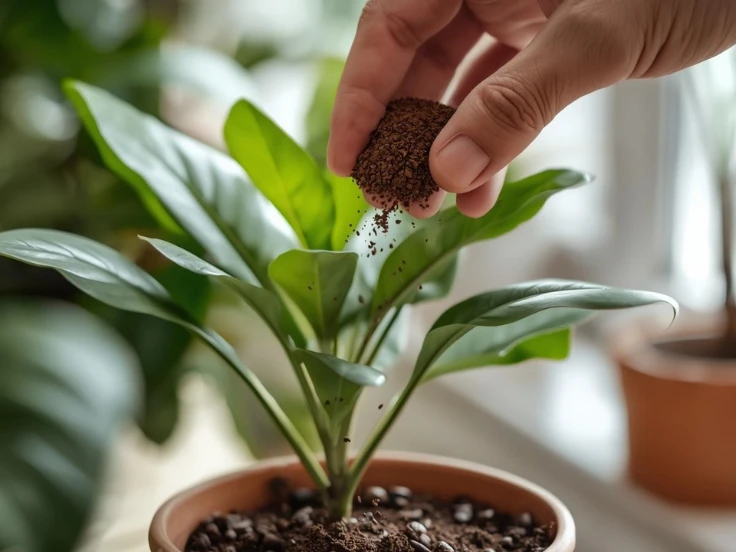
ant Care
Coffee grounds are just one component of effective indoor plant care. Proper lighting, watering, drainage, and soil quality remain critical. Coffee grounds should enhance, not replace, these fundamental elements.During repotting, small amounts of coffee grounds can be mixed into fresh potting soil to refresh nutrients.
Observing your plants closely and adjusting care routines based on leaf color, growth rate, and overall vigor ensures sustainable success.In combination with balanced fertilization, adequate sunlight, and proper watering practices, coffee grounds can help create thriving indoor plants that are both healthy and environmentally friendly.
FAQs
Q: Can I use fresh coffee grounds on indoor plants?
A: No. Fresh grounds are too acidic and contain caffeine that may inhibit growth. Only use brewed or dried grounds.
Q: How often should I apply coffee-ground tea?
A: Once a week during the growing season, monitoring your plant’s response.
Q: Will coffee grounds work for all indoor plants?
A: No. Avoid using them on alkaline soil-loving plants, succulents, cacti, and seedlings.
Conclusion
Using coffee grounds for houseplants can improve soil quality, promote growth, and reduce kitchen waste. They add nitrogen and organic matter but should be used moderately to prevent mold or compaction. For more indoor plant tips, explore good luck indoor plants.
By combining coffee grounds with proper watering, light, and balanced fertilization, indoor plants thrive naturally. For color-loving species, explore purple-colour indoor plants for inspiration and aesthetic variety. Observing plant responses and adjusting care routines ensures long-lasting indoor garden success.


